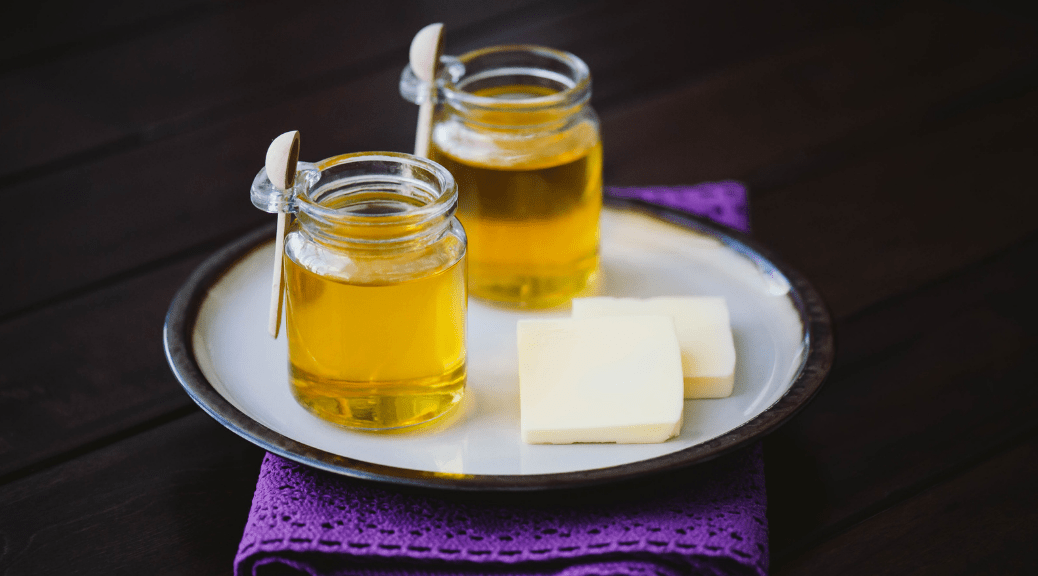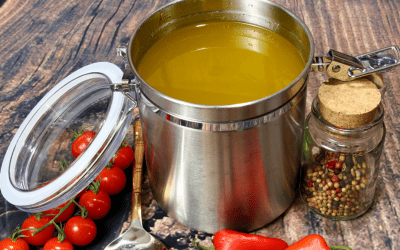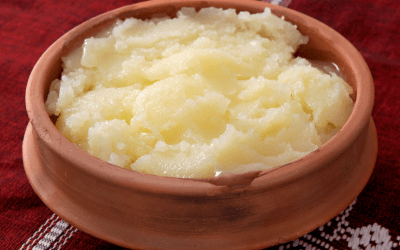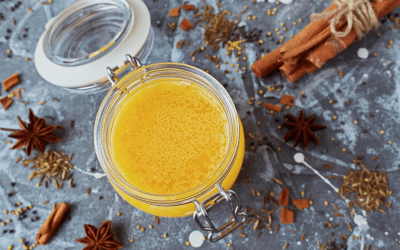Ghee is a clarified type of butter, meaning that it has been simmered into a concentrate and the residue has been removed. What remains is basically a pure combination of fats, without any milk residue, which means that it does not need to be refrigerated. We understand what is Ghee made up of, the difference between Vitamin A and Beta-carotene and its numerous benefits. For example-great skin health, thick hair growth to boosting our immune system and weight gain.
Due to variation in its composition from region to region and season to season, depending on the type of animal and the feed given, the establishment of its purity often involves elaborate analysis, as well as tests for it’s keeping quality. Let’s understand the physical properties of Ghee.
Physical Observations of Ghee
- Ghee shall be free from excess moisture.
- On melting, the ghee shall be clear, transparent and free from sediment or foreign colouring matter.
- A good ghee sample should have well-developed granules dispersed fairly, thickly and uniformlyover the entire mass. A bright yellow colour, caused by the presence of carotenoid pigments (beta carotene), is associated with cow ghee and constitutes a desirable criterion in areas where it is preferred. Buffalo ghee is white in colour. Sometimes, it may also have a greenish tinge depending on the region and feeding schedule. Ghee from mixed milk has a straw-yellow colour. The colour of fats always appears deeper to the eyes when melted than when in solid form.
Physical observations on the 14 desi ghee and cow ghee samples were made by Consumer VOICE experts, checking for colour and texture and whether they were free from sediment and objectionable flavour. Check the results for Desi Ghee and Cow Ghee.
Ghee is rich source of Vitamins
Ghee is a carrier of the fat-soluble vitamins A, D, E and K, which our body needs in very small quantities but cannot make for itself. These vitamins perform many essential functions. Similarly, the essential fatty acids, which cannot be synthesised in our body, are also supplied by ghee.
The human body converts beta-carotene into vitamin A (retinol) – beta-carotene is a precursor of vitamin A.
Vitamin A and Beta Carotene Difference
Beta-carotene is a yellow/orange pigment found mostly in fruits and vegetables, especially carrot, mango, papaya, orange, apricot, melon, tomato, pumpkin and spinach. For beta carotene, the recommended dietary allowance (RDA) for an adult is 4,800 milligrams/day.
It is found in Ghee as well and it comes from the cows’ diet, which consists mostly of dried grass, grass, grains and cereals.
The amount of beta-carotene in cow ghee depends on a few factors including cow’s breed; cow feed (grass-fed dairy produce contain more beta-carotene than cows that are fed grains); the season of the year; and the biological makeup of milk throughout the lactation period. This is of great benefit to our bodies.
Here are some of the key health benefits of Vitamin A and Beta carotene supplements:
- It is critical for good vision
- It plays an important role in healthy bone growth
- It is essential for reproduction
- It plays a role in cell division and cell growth
- It supports the immune system
- It supports skin and hair health
Cow Ghee Health Benefits
Ghee is termed as a ‘superfood’ because of its numerous benefits. Let’s take a closer look at this ancient butter substitute to see what it really contributes to human health.
- Boosts Energy
For athletes or other people with active, high-energy lifestyles, ghee can provide the necessary burst of energy that you might need to get through a challenging day.
- Reduces Allergy
Since ghee is dairy-free, lactose intolerant individuals or those who cannot consume butter are free to enjoy the flavorful treat of “butter” in the form of ghee.
- Heart Health
Although most people associate butter with fat and a decline in heart health, the rich variety of fats in ghee can provide a healthy boost to the heart. Omega-3 fatty acids can help decrease your levels of unhealthy cholesterol and provide an energetic balance to your fat intake.
- Reduces Inflammation
Ghee possesses butyric acid, which is one of the most beneficial short-chain fatty acids that the body needs. Butyric acid has been shown, in recent research, to actually decrease inflammation in parts of the body, particularly in the gastrointestinal tract, and has been used in traditional medicine for treating inflammation of all kinds.
- Improves Skin and Hair Health
Ghee helps moisturising the skin, hydrating the skin and brightening. Also known to slow down skin raging; massage into skin daily for results.
It has great benefit on your hair – stimulates hair growth( used to massage your scalp) , it helps reduce split ends and conditions your hair ; shampooing your hair can lead to shiny tresses.
Side Effects or Disadvantages of Ghee:
All of the benefits mentioned above make ghee sound like an ideal substitute for butter; however, ghee is made purely of fat, so excessive consumption of ghee can dramatically change your fat intake. Be careful about your ghee intake.
Related
Say no to vanaspati (ghee)
Vanaspati is an industrial product and formed by partial hydrogenation of refined edible vegetable oil or oils. Hydrogenated oils are more...
It’s Desi all the way – the best desi ghee brand
Also known as clarified butter, desi ghee is almost an inevitable ingredient in Indian households. Ghee is brushed generously over rotis and...
Cow Ghee – How pure is your ghee?
Indian cuisines are famous for its delectable taste and aroma. Thanks to our age-old cooking tradition that uses a lot of spices and desi ghee....




